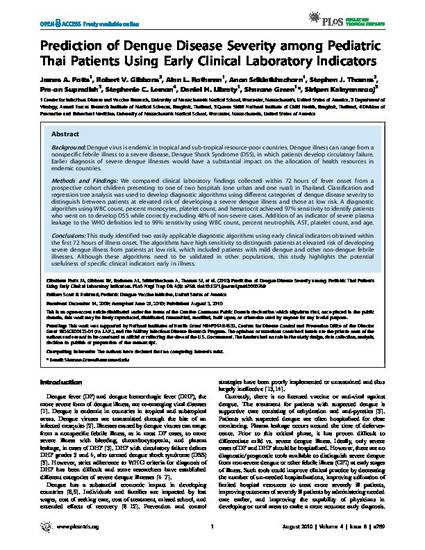
BACKGROUND: Dengue virus is endemic in tropical and sub-tropical resource-poor countries. Dengue illness can range from a nonspecific febrile illness to a severe disease, Dengue Shock Syndrome (DSS), in which patients develop circulatory failure. Earlier diagnosis of severe dengue illnesses would have a substantial impact on the allocation of health resources in endemic countries.
METHODS AND FINDINGS: We compared clinical laboratory findings collected within 72 hours of fever onset from a prospective cohort children presenting to one of two hospitals (one urban and one rural) in Thailand. Classification and regression tree analysis was used to develop diagnostic algorithms using different categories of dengue disease severity to distinguish between patients at elevated risk of developing a severe dengue illness and those at low risk. A diagnostic algorithm using WBC count, percent monocytes, platelet count, and hematocrit achieved 97% sensitivity to identify patients who went on to develop DSS while correctly excluding 48% of non-severe cases. Addition of an indicator of severe plasma leakage to the WHO definition led to 99% sensitivity using WBC count, percent neutrophils, AST, platelet count, and age.
CONCLUSIONS: This study identified two easily applicable diagnostic algorithms using early clinical indicators obtained within the first 72 hours of illness onset. The algorithms have high sensitivity to distinguish patients at elevated risk of developing severe dengue illness from patients at low risk, which included patients with mild dengue and other non-dengue febrile illnesses. Although these algorithms need to be validated in other populations, this study highlights the potential usefulness of specific clinical indicators early in illness.
Available at: http://works.bepress.com/alan_rothman/11/